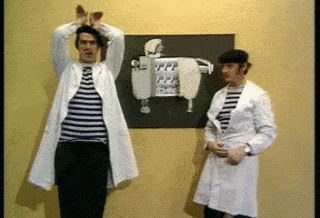-
Posts
708 -
Joined
-
Last visited
Content Type
Profiles
Forums
Store
Downloads
Recruiting - 2020
2019-2020 Football Season
Football
Entertainment
Sports
News and Business
Cloak Room
Transfer Portal
Recruiting
Events
Posts posted by Txzen
-
-
1 minute ago, Ghost of Shag said:
Our pass blocking has been great all night.
Seriously. And QE has - generally - been composed in the pocket.
-
 1
1
-
-
1 minute ago, sith_horn said:
I don't disagree with this and Bama's D dosn't allow for a lot of errors. But Sark has also made a lot of questionable rushing calls where we consistently haven't gotten much to show for it. Those are errors too.
I didn’t like some of those slow developing runs either.
The balance is good. Points left on the field.
-
 1
1
-
-
1 minute ago, sith_horn said:
Well Sark. What ya got?
He’s got skill players with the dropsies.
-
1 minute ago, Rockethorn1978 said:
3rd qtr sark is back.
Not sure I agree. Playing to win. It’s been there for the taking.
-
-
Goddamn zebra conference
-
Thank you D.
Don’t fuck this up (again) O.
-
 1
1
-
-
Getting happy feet
-
First holding call. Of course.
-
Goddamn PK getting it done today. Fucking great D.
-
Ewers looking good in the fucking pocket.
-
Good coverage downfield on that stop.
-
Sark calling a good game. When we get out our own way, it’s fucking there for the taking.
-
 3
3
-
-
Fuck yes
-
Yeah, good luck navigating as the locals tend to remove all the street signs there.
Salt Water Oyster Depot in Inverness is really great. Grab a sandwich at Inverness Park Market on your way to Point Reyes.
-
 1
1
-
-
On 8/8/2023 at 2:17 PM, Mo Horn said:
We lived in Santa Cruz for a couple of years, a lifetime ago. Not a whole lot to do other than wander shops and the beach. Boardwalk is fun. Drive to Monterrey and Carmel for the day. Great aquarium and food, plus it's gorgeous.
Pop over to nearby Capitola, since you are there. Cute little town.
-
 1
1
-
-
Same issues faced with some the California wildfires - as noted above when the wind is blowing as strong as it was you can’t fly.
Heartbreaking. Beautiful town, wonderful people. And the banyan tree. Furk.
-
Also, while I love Kirkwood I would never drive there from the Olympic Valley area. First, highway 89 will be closed come winter time at Emerald Bay so to drive to Kirkwood you'd have to drive around the lake (clockwise) - Kings Beach, Zephyr, SLT. Then there's a pass you'll have to go through which is often a bit dicey. At the very least you'll need chains and/or 4WD. I would do Northstar (closer), Mt Rose (farther) before even thinking of Kirkwood. Heavenly also will require the same route around the lake. Just enjoy where you're at - I think Palisades probably has the best overall ski terrain at Tahoe.
And Kirkwood sucks - no one should go there. No night life, practically no on-mountain dining, slow butt slamming lifts. Stay away. Terrible place.
-
 1
1
-
-
Alas, no tubing on the Truckee this year. It's complicated - this year, for a change, it's cancelled because there's too much water and they slowed the flow (as opposed to all the years it was closed because of drought).
SpoilerNormally, the Truckee River Rafting Company starts welcoming visitors on Memorial Day, but not this year. River rafting on a section of the river might be shut down for the entire summer season.
Despite a historic wet winter, the 5-mile stretch of weaving water from Tahoe City to River Ranch Road is currently at low levels. “It is a complicated system. Because of the snowpack, the water master can’t release water from Tahoe because it can lead to flooding downstream,” said Sydney Courcier, Truckee River Rafting Company manager.
She said the rafting season should be in full swing by now, operating about 100 to 200 rafts a day. “We are really sad about it all, but we are happy about the amount of water, and it is good for everything,” said Courcier.
She said it is possible the risk of flooding downstream may taper off, allowing the release of Lake Tahoe water into the river which could give them a chance to open back up. “We could be back in business in August. We will just have to see,” said Courcier.
That was at the beginning of the season. The company we normally use still says 'closed' so I'm not sure the situation changed.
Great hike/bike path from Olympic Valley down to Tahoe City. In that area the path is separate from the road. It continues south from there along 89, which has some nice stretches but also forces you to cross the (very busy) road a few times. Can be dicey with kids.
-
Just got off a call with leadership. The press reports and even the note to US parents was all about the heat. But they now say the sanitary conditions were not good (shower and toilets) and at least initially the calories provided were inadequate. They stated concerns also that the on-site medical care was not able to keep up with the demand.
That isn’t the story BSA first told us and many think they are trying to avoid any (more) legal issues.
So instead of interacting with scouts from around the world, the US contingent will be sleeping on cots in a middle school gym at Humphreys. They have some ‘cultural’ activities on base planned which sound more like arts and crafts, as well as trips into Seoul for some sightseeing, shopping, and a baseball game. Going to legoland also discussed which will not be a lot of fun for any of the older teens. Evenings will be spent watching movies projected on the wall.
They will not return to the Jamboree even for closing ceremonies. They will watch a livestream in the gym.
Shittastic.
-
 1
1
-
-
3 hours ago, Parliament said:
Fyre 2
With more K-pop.
-
 2
2
-
 1
1
-
-
I have a Scout on the ground there.
It’s hot. The infrastructure is probably not up to snuff. But his group and their adult leaders are fully prepared and able to care for the scouts. They don’t want to leave - they are having a great time meeting Scouts from 160 other countries.
No one asked the Units. Humphreys is 2.5 hr away. They stayed there one night before the Jamboree. They were confined to a gym and ate (sorry but) lousy MREs. It sucked.
The conditions are tough. They are scouts. They’ve done worse. This is overblown media coverage.
Most have worked hard to raise funds to help pay their way for a once in a lifetime opportunity. Leaving early is dumb.
-
 2
2
-
 1
1
-
-
I've only been once - in Hyderabad for business a few days and then a short excursion to make good use of the jet lag. Traveled a lot in my life - Mexico, behind the Iron Curtain in the early 80s, rural China 20 years ago. Nothing was quite like India.
Truly some beautiful places to see, and yes absolutely maddening and simultaneously beautiful chaos. Cattle in the marketplace.
Probably my main issue was that unlike any other trip, I really felt preyed upon. Maybe it was because I was a single traveler, and I do like to engage with people. I also like to walk all over with my camera and do as much street photography as I can. I found the Indians to be almost uniformly pleasant. But so many were just using the same script - 'Where are you from? Why are you here? What do you do? Oh, interesting, I teach at such and such school, we are having an art show today to help the students...', all in order to get you to go to a store where they get some sort of finders fee for bringing you in. I don't blame them, and don't hate them for it, so there were just so many of those interactions - 5-10 of them an hour - that I had to routinely shoo people away or be a bid rude to make them quit. It's incessant and it doesn't matter if you are near a tourist area or away from it. Also, the veil of pleasantry drops the minute you say no, and more than a few times the interaction turned somewhat angry. Never felt in any danger (at all) but those constant interactions really got old.
That said, saw some amazing things, and had some of the best food I've ever had (and didn't really have any stomach issues). But the abject poverty and the totality of the pollution is something which I've never experienced before. It's not just the poor children, it's the poor children picking through garbage that gets you. Hard to unsee.
Since you're down south, maybe try changing geographic areas to explore? Each seems like it's own country. I did a quick stay in Rajasthan - specifically Udaipur, but some of the neighboring towns (Jodhpur, Jaipur) look amazing as well. Udaipur was simply beautiful. I found it pretty easy to take domestic airlines, at the time IndiGo was cheap, clean and modern. Now, getting a taxi once you exit the airport was an exercise in fuckery, though...
-
On 7/23/2023 at 5:32 AM, KYHorn said:
Poland's response:
Spoiler
-
 3
3
-
 1
1
-



2023 Texas @ Alabama - 6pm on ESPN
in Football
Posted
FUCJ YES